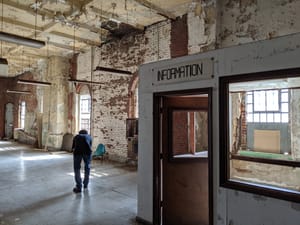In a recent article on the catalog, I discussed how ‘discovery’ of library materials was increasingly going to be ‘disembedded’ from the local library catalog, and ‘re-embedded’ in a variety of other contexts. Those other contexts might need to link back to the library system, which is becomes more of a location and availability service. I suggested a non-exhaustive list of how this was happening, and thought that I would repeat it here:
Local Catalogue Discovery Environments
There has been a recent emphasis on the creation of an external catalogue discovery system, which takes ILS data and makes it work harder in a richer user interface. The NCSU catalogue has been much discussed and admired in this context. Ex-Libris has announced its Primo product which will import data from locally managed collections and re-present it. Furthermore, we have just seen announcements about the eXtensible Catalog project at the University of Rochester. One of the ironies of the current situation is that just at the moment when we begin to extract more value from the historic investment in structured data in our catalogues, and these initiatives are examples of this trend, we are also looking at blending the catalogue more with other data and environments where it may be difficult to build services on top of that structured data. Think of what happens, for example, if you combine article level data and catalogue data.
Shared Catalogue Discovery Environments
We also observe a greater trend to shared catalogues, often associated with resource-sharing arrangements. It has not been unusual to see a tiered offering, with resources at progressively broader levels (for example: local catalogue, regional/consortial, Worldcat). The level of integration between these has been small. However, in recent times we have seen growing interest in moving more strongly to the shared level. This may be to strengthen resource-sharing arrangements, the better to match supply and demand of materials (the ‘long tail’ discussion), and to reduce costs. And once one moves in this direction, the question of scoping the collective resource in different ways emerges: moving from local to some larger grouping or back. The value of OhioLink as a state-wide catalogue is an example here. OCLC has just made Worldcat.org available, which aims to connect users to library services, brokering the many to many relations involved. A critical driver here is the benefit of consolidation, and discussion of what level of consolidation is useful. Increasingly, a library will have to consider where and how to disclose its resources.
Syndicated Catalogue Discovery Environments
Increasingly, the library wants to project a discovery experience into other contexts. I use ‘syndication’ to cover several ways of doing this. Typically, one might syndicate services or data. In the former case a machine interface is made available which can be consumed by other applications. We are used to this model in the context of Z39.50, but additional approaches may become more common (OpenSearch, RSS feeds, ..). How to project library resources into campus portals, or course management systems, has heightened interest here. A service might provide a search of the collection, but other services may also be interesting, providing a list of new items for example. The syndication of data is of growing interest also, as libraries discuss making catalogue data available to search engines and others, with links back to the library environment. Several libraries and library organisations are exposing data in this way. And OCLC has been very active in this area with Open WorldCat, where member data is exposed to several
search engines.The Leveraged Discovery Environment
This is a clumsy expression for a phenomenon that is increasingly important, where one leverages a discovery environment which is outside your control to bring people back into your catalogue environment. Think of Amazon or Google Scholar. Now this may be done using fragile scraping or scripting environments, as for example with library lookup or our FRBR (Functional Requirements of Bibliographic Records) bookmarklets. Here, a browser tool may, for example, recognise an ISBN in a Web page and use that to search a library resource. The work that Dave Pattern has done with the University of Huddersfield catalogue is an example here. The broader ability to deploy, capture and act on structured data may make this approach more common: the potential use of CoINS (ContextObject in Span) is a specific example here.
Related entries:



